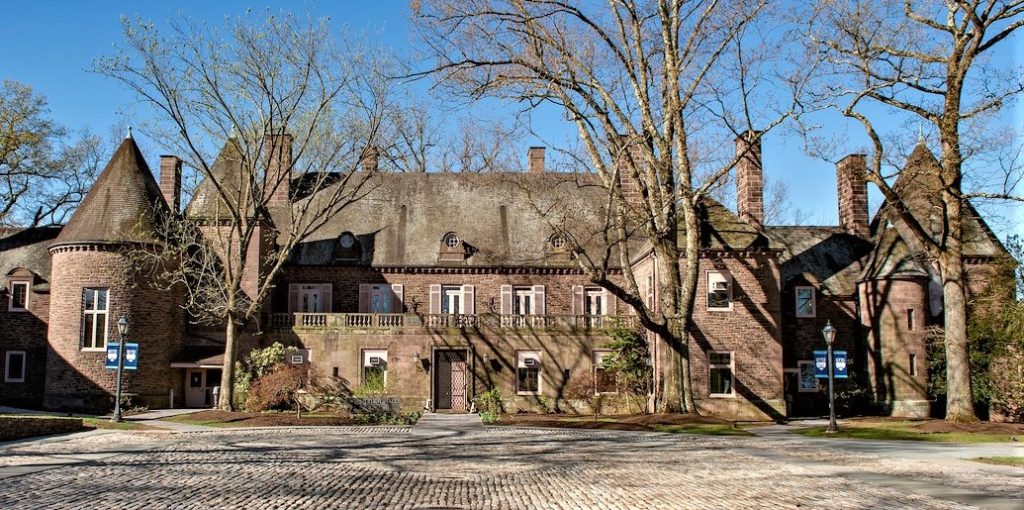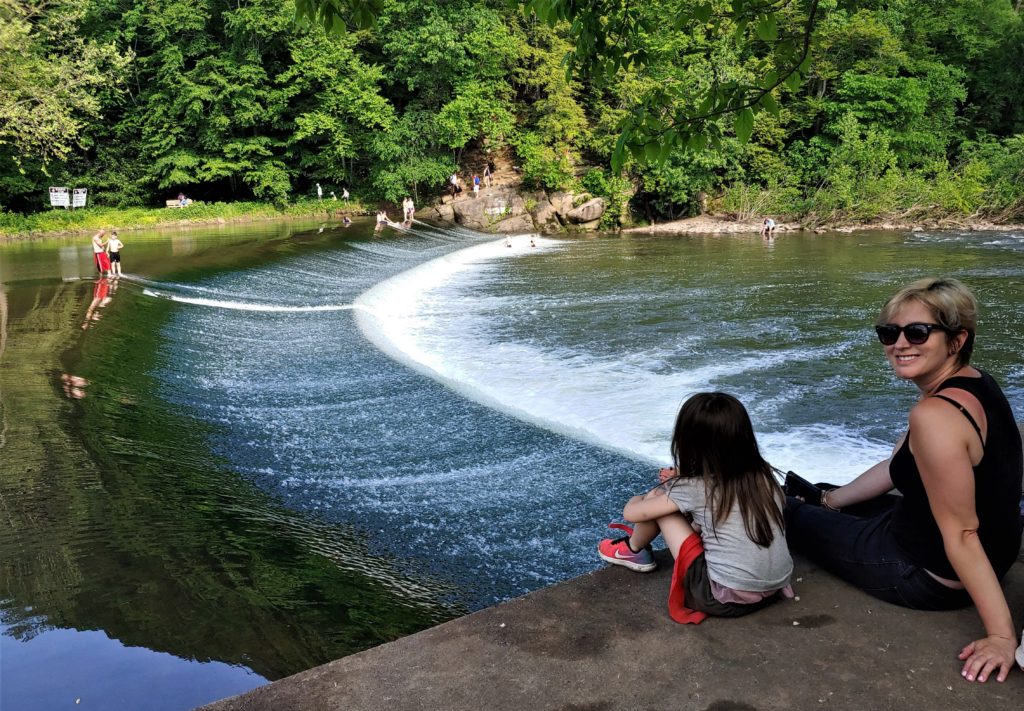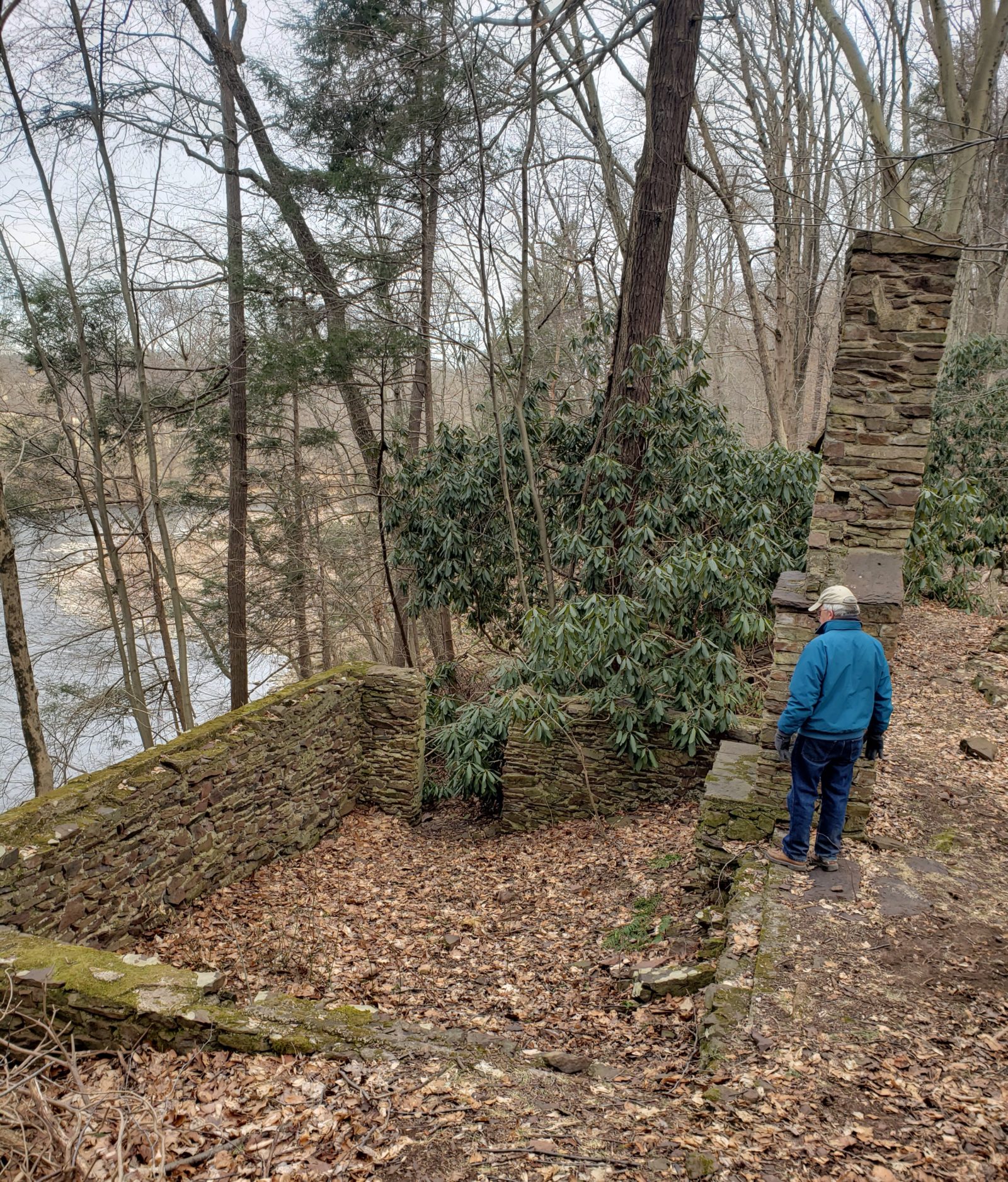There is much to be discovered in what was once Bucks’ grandest estate.
I enjoy outings in Tyler State Park with my daughter and grandchildren as often as possible. We splash around in Neshaminy Creek, go canoeing and hike the park’s network of trails that cover 25 miles and pass through Bucks County’s longest covered bridge built in 1873.
Ellen and Ed Short, like us, also like exploring the 1,711 acres of streams, woodlands and historic sites within the park. Their home borders the preserve. As Ellen put it, “Our kids grew up thinking the park was their backyard.” Recently she reached out to me about a discovery she and Ed made back in the woods. “What do you know about this cabin overlooking Neshaminy Creek in the park?” she asked, attaching a couple of snapshots. “I also would be interested to hear more about the background of what was located on the Tyler family estate.”
Apparently, the stone fireplace and foundation are the ruins of an ancient log cabin off one of the horse trails that meander in and out of the park’s northern boundary. At least that’s the belief of local equestrians. Ellen and Ed’s discovery is a mere hint of the storied history of the park. Lenni Lenape Indians once inhabited the area. A perilously perched stone outcropping 200 feet above the Neshaminy called “Indian Council Rock” was a gathering place for chieftains in pre-Colonial times. William Penn bought the acreage from them after arrival in 1682. He subdivided and sold it to European settlers. Over time they cleared much of the land for 18 farms embracing both sides of the creek on the Northampton-Newtown Township border. The colonists built 10 fieldstone farmhouses plus barns, outbuildings and several grist mills, one of which survives.


The mills and farms prospered through the 1800s and early 1900s. Then George and Stella Tyler arrived in 1919. The wealthy Philadelphia banker and his sculptor wife from the blue chip neighborhood of Chestnut Hill dreamed of building a grand estate in the suburbs where they could stable horses, go on hunts and enjoy seclusion. They were drawn to the area of the famed Indian overlook. In the course of 10 years, they bought all 18 farms around it and built a three-story mansion with turrets styled after French Norman chateaus, architecture popular in America after World War I. Tyler Hall lorded over the cliff just above Indian Council Rock. With 60 rooms, 24 fireplaces, an English pub, an orangery and four-tiered ornamental garden lined with boxwoods, it was unrivaled in Bucks County. Stone service cottages, a 10-car turntable garage for George’s Cadillacs and an underground heating system supported the mansion that housed 40 live-in servants. Paved roadways connected the mansion to a stable for 25 horses, a working dairy and all the farmhouses and barns scattered throughout the estate.
George and Stella loved to entertain. They would arrive from the city with guests in cavalcades of limousines. George “Chic” Belmont, son of the night watchman, grew up in one of the cottages near the mansion. He recalled the joy with his brothers and sister exploring the vast woodlands open to the kids for hunting, fishing, swimming and watching the owners and their friends come and go on the winding, two-mile main drive into the mansion off Newtown-Richboro Road (Route 332). “It was a wonderful, wonderful place,” Chic told me a few years ago as we toured the park. “I remember the fox hunts with the riders on horseback dressed in their tall hats and red coats. The Tylers also raised pheasants on the estate and released them for the hunt.”

After George Tyler’s death in 1947, Stella remained in the mansion that “suddenly had gone quiet,” recalled Belmont. Stella’s died in 1963 a year after moving back to Chestnut Hill. She willed 200 acres including the mansion to Temple University. The remaining 1,711 acres she bequeathed to the state to become Tyler State Park in 1974. Temple later sold the mansion and its acreage to Bucks County for a new community college in 1965. Tyler Hall is BCCC’s administrative headquarters. The grounds are maintained in their former glory, open to public visitation. In 1987 the mansion and gardens were added to the National Register of Historical Places.
Farmhouses in the park have been re-purposed. Many are sublet to private individuals. One serves as a hostel. The Tylers’ horse stable and barn are now an arts center. The park’s Spring Garden Mill on Route 332 is a dramatic arts theater for the Langhorne Players.
Today Tyler State Park is a recreational jewel. For Ed and Ellen the natural setting is an anchor. These days you can find them wandering their “backyard” making new discoveries and remembering all the woodland walks the family once enjoyed with their beloved dogs – drum roll please – “Tyler”and “Benny, Squire of Tyler”.
***
Sources include a recreational guide to Tyler State Park published by the state Department of Conservation and Natural Resources available at park headquarters; “Stella Elkins Tyler: A Legacy Born of Bronze” by Robert A. Meyer published in 2004 by Bucks County Community College, and the help of Phillip Schmidt, park manager.

